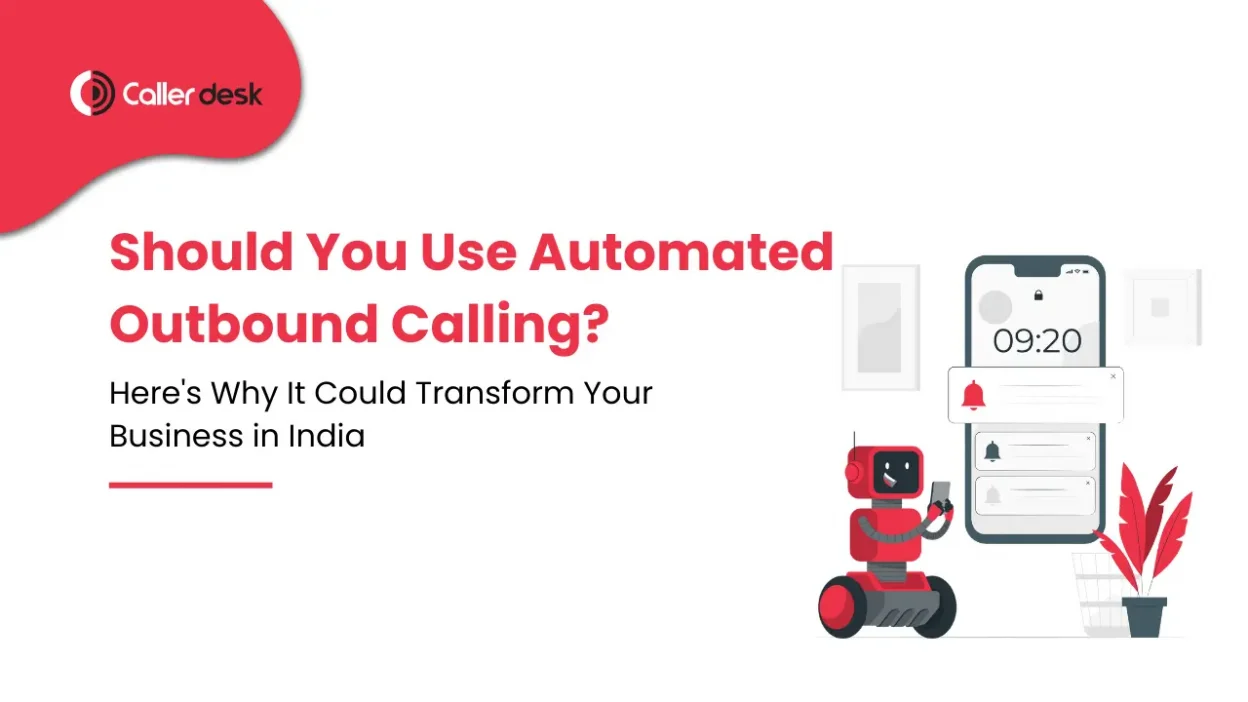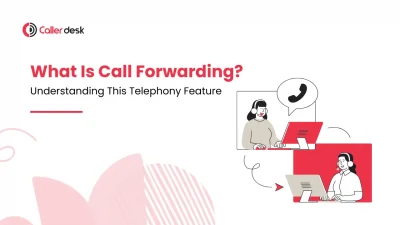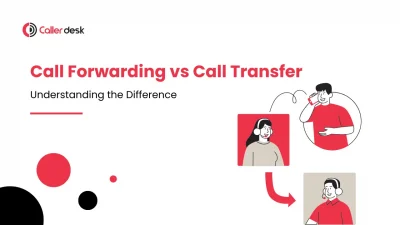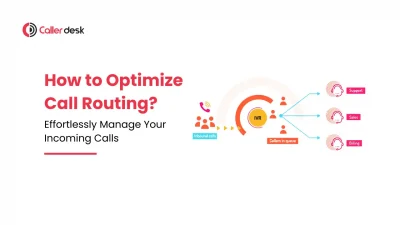Running a business in India comes with its challenges. Reaching a large audience while keeping costs low can be tough, especially when resources are limited. That’s where automatic outbound calling can help.
Imagine being able to connect with hundreds or even thousands of customers without making each call yourself. Automatic outbound calling makes this possible by handling tasks like sales calls, appointment reminders, customer surveys, and follow-ups automatically.
But before you decide to use it, you need to know if it’s the right fit for your business. Let’s look at the benefits and challenges of automatic outbound calling to help you make the best decision for your business growth.
Benefits of Automated Outbound Calling
Automated outbound calling is like having a tireless assistant for your business. It uses smart technology to automatically dial numbers from a pre-recorded list, saving time and letting your team focus on what really matters—closing deals and building relationships. Here are some benefits:
1. Increased Efficiency
Why spend hours dialing numbers when technology can do it for you? Automated calling helps you connect with more people in less time, handling high call volumes without hiring extra staff. This means your business can scale its outreach without breaking a sweat.
2. Improved Productivity
Imagine freeing your team from routine tasks like confirming appointments or chasing payments. Automated calls handle these time-consuming chores, giving your staff the bandwidth to focus on revenue-driving activities like nurturing leads and closing sales.
3. Cost Savings
Manual dialing isn’t just slow—it’s expensive. Automated outbound calling eliminates the need for additional manpower and cuts down on wasted time waiting for someone to answer, reducing operational costs significantly.
4. Consistent Messaging
Every customer gets the same clear, professional message, every time. Whether it’s a product update or a regulatory notice, automated calls ensure consistency and help maintain your brand’s reputation.
5. Scalability
Businesses grow, and so should your outreach efforts. Automated calling allows you to scale up or down effortlessly—whether it’s seasonal promotions or year-round campaigns, this tool adapts to your needs.
Potential Drawbacks of Automated Outbound Calling
While automated outbound calling offers undeniable advantages, there are also potential drawbacks to consider:
1. Negative Perception
Let’s be real—nobody loves a robotic-sounding call. Some consumers may view automated calls as annoying, intrusive, or impersonal. This can negatively impact your brand’s reputation if not handled thoughtfully. To avoid this, focus on creating personalized, human-like scripts that add value to the customer instead of just pushing sales.
2. Regulations
If you’re operating in India, you need to play by the rules. The Telecom Regulatory Authority of India (TRAI) has strict guidelines for automated calls, such as requiring customer consent and offering easy opt-out options. Failing to comply can lead to hefty fines or even a ban on your operations. Always stay updated on regulations and ensure your system aligns with the latest rules.
3. Limited Interaction
Automated systems are great for straightforward tasks but fall short when the conversation gets complex. If a customer has a detailed query or a unique issue, the lack of human interaction can leave them frustrated. To overcome this, combine automation with live agent support so customers can seamlessly switch to a human when needed.
Who Can Benefit from Automated Outbound Calling
Automated outbound calling can be beneficial for businesses in various sectors, particularly those involved in:
1. Lead Generation
Tired of chasing leads manually? Automated outbound calling allows you to reach a large number of potential customers quickly, providing a steady flow of qualified leads for your sales team.
2. Appointment Reminders
Missed appointments can be costly. Automated reminders help reduce no-shows by ensuring your customers remember their scheduled meetings or services.
3. Market Research
Want to know what your customers think? Use automated calls to conduct surveys at scale, making it easy to gather valuable feedback and insights without wasting time.
4. Payment Collections
Struggling with late payments? Automated reminders make it easy to follow up on overdue bills, helping you get paid faster without burdening your staff.
5. Event Invitations and Follow-ups
Planning an event? Automated outbound calls can send out invitations and follow-up reminders, ensuring maximum attendance while saving time and boosting engagement.
Best Practices Automated Outbound Calling
To maximize the benefits of automated outbound calling, follow these best practices:
1. Target the Right Audience
Your campaign is only as good as your audience list. Focus on reaching people who are likely to benefit from your product or service. Use segmentation to personalize your message, ensuring it resonates with the recipient. The more targeted your list, the better your results.
2. Personalize Your Message
Automation doesn’t mean generic. Personal touches like using the recipient’s name or addressing their specific needs can make all the difference. Tailored messages are more engaging and build trust with potential customers.
3. Schedule Calls Wisely
Timing matters. In India, calling during late mornings (around 11 AM) or early evenings (around 5 PM) typically yields better results. Avoid calling during odd hours to respect the recipient’s schedule and increase the chances of a positive response.
4. Offer an Opt-Out Option
Nobody likes feeling trapped. Always include a simple and clear opt-out option in your calls. This not only ensures compliance with regulations but also builds trust with your audience by respecting their preferences.
5. Track and Analyze Results
Don’t set it and forget it. Use analytics tools to monitor key metrics like call success rates, response rates, and customer feedback. Regularly review this data to refine your campaigns and improve performance over time.
6. Follow Up Strategically
One call isn’t always enough. Develop a follow-up strategy for those who didn’t respond or showed interest but didn’t take immediate action. Use automated reminders or personalized follow-up calls to nudge them towards conversion.
Is It Right for You?
Automated outbound calling can be a powerful tool for businesses seeking to streamline operations and improve efficiency in India. However, it’s crucial to weigh the pros and cons and implement it strategically to avoid alienating your audience. By following these guidelines, you can leverage the power of automated outbound calling to achieve your business goals in a responsible and effective way.
Ready to transform your business with automated outbound calling? Contact us today for a consultation or try our demo to see how it works!



